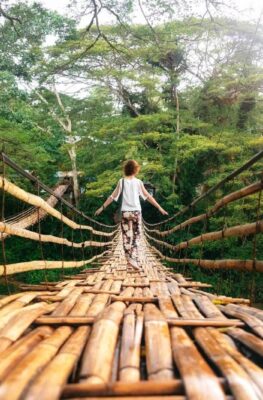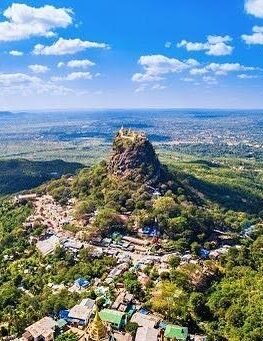Published on December 8, 2014
The Myanmar are one with nature, and these places prove it – from Inle Lake’s villages to Mount Popa’s plant pharmacopeia.
1.1. Inlay Lake, Southern Shan State
The historic Inlay Lake Region is home to the Intha peoples, whose lakeside villages are almost entirely dependent on the surrounding waters. The Intha grow vegetables on floating gardens, commute between places entirely by boat, and celebrate the annual Hpaung Daw U Festival as a fluvial parade. Beyond visiting traditional crafts production sites around the lake, travelers can go further afield, hiking to Taunggyi and Kalaw and stopping over at Pindaya to visit their caves full of Buddha images.
1.2. Mount Popa, Mandalay Region

This extinct volcano rising over Central Myanmar defies the desert-like conditions of the surrounding Dry Belt with a profusion of forest and wildlife. The area’s reputation for growing medicinal plants goes all the way back to King Anawrahta’s time: villagers allowed to harvest plants around Mount Popa look for guduchi (Tinospora cordifolia) to treat hypertension; Gentiana kurroo root to treat toothaches; and Glycosmis pentaphylla to treat muscle pain.
The forests harbor an array of wildlife, including the endangered dusky leaf monkey, several species of wild pig, barking deer, and about 140 species of birds.
1.3. Pyin Oo Lwin, Mandalay Region
While the British founded Maymyo in 1896, they conceived a summer getaway from lowland Myanmar’s oppressive (to them) heat and humidity. Today’s Pyin Oo Lwin retains the original plan’s parkland air, its streets lined with shady and flowering trees like jacaranda, cherry, and flame of the forest. The surroundings in Pyin Oo Lwin are full of flowers, and fruits and vegetables are easily available all year round.
The hill station’s wealth of flora can best be seen at the Kandawgyi National Gardens, Myanmar’s first botanical garden full of trees, refreshing lakes and open lawns. Further out, you can explore the Baw Forestry Reserve and discover the world’s third-tallest teak tree; or picnic at the Pwe Kauk Falls off Lashio Road.






